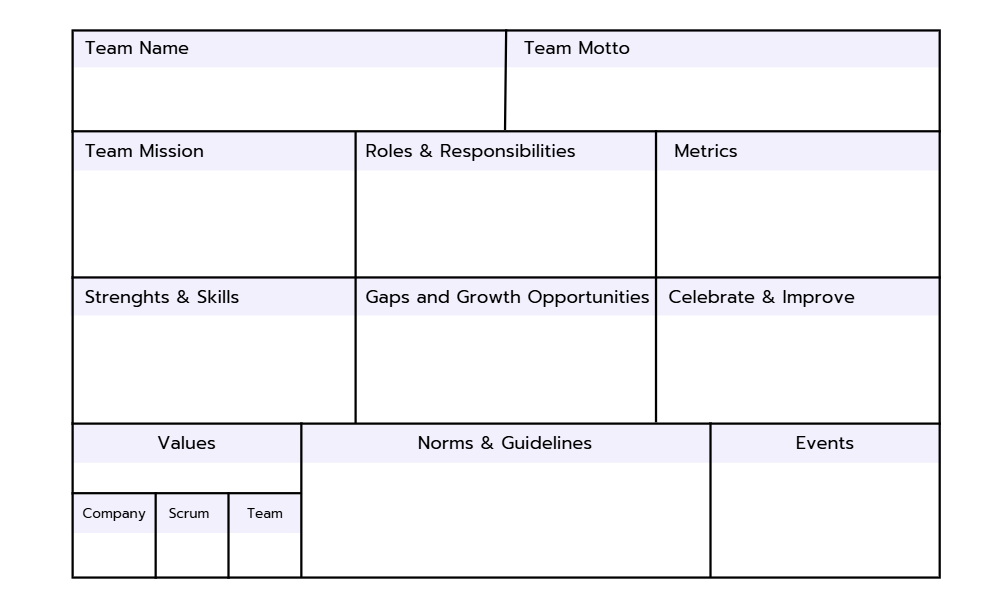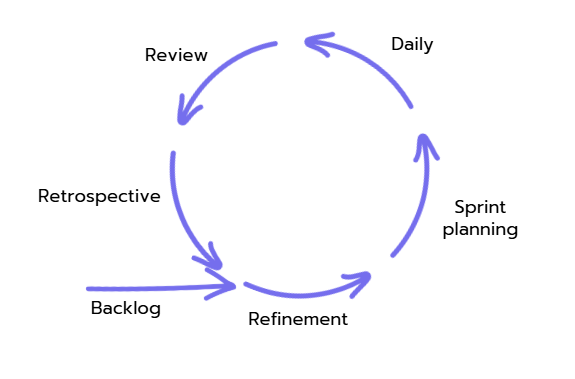Scrum is a popular agile development framework that has found widespread acceptance in various industries due to its ability to foster collaboration and deliver high-quality products incrementally. This article aims to provide you with an insightful understanding of the Scrum framework and the way its various components interrelate, thereby equipping you with knowledge that is essential in a technical consulting environment.
The Scrum Framework
The Starting Point: Stakeholders, Ideas, and Budget
Every Scrum initiative begins with an idea, typically originating from a group of stakeholders. This can include customers, end users, or other key individuals within the company. These stakeholders provide the necessary budget and hand over the idea to a Scrum team, led by a key figure: the Product Owner. The Product Owner's primary responsibility is to develop a product that meets the needs and expectations of as many stakeholders as possible. However, they don’t work alone. Bringing the idea to life requires collaboration with a development team, who determine the best technical approach to build the product effectively.
The Scrum Team: Product Owner, Scrum Master, and Developers
The Scrum team is composed of three roles: Product Owner, Scrum Master, and Developers. The Scrum Master is tasked with optimizing team collaboration and effectiveness. Before the team can start its first iteration (called a "Sprint"), they need to agree on working practices (known as Working Agreements), set a Product Goal or vision, and prepare a Product Backlog that lists the work to be done.

Working Agreements, Product Goals, and the Product Backlog
Working Agreements are essentially a shared understanding of how the team will work together, facilitated by the Scrum Master. The Product Goal, driven by the Product Owner, outlines who the product is for, their needs, the proposed solution, and how the initiative contributes to the organization's strategy.
From the Product Goal, the team creates a Product Backlog — a prioritized and detailed list of requirements for the product that regularly evolves based on new insights and stakeholder feedback. The team estimates the top part of the backlog to help the Product Owner plan future work. It is important to know that the Scrum Team does not estimate effort in hours but uses abstract metrics such as T-shirt sizes (S to XXL) or points, usually based on the Fibonacci number sequence.
The Scrum Sprint: Planning, Execution, Review, and Retrospective
With the Scrum Team, Working Agreements, Product Goal, and Product Backlog in place, the team can embark on their first Sprint. Each Sprint starts with a Sprint Planning event, where the team decides on the Sprint Goal and moves items from the Product Backlog into the Sprint Backlog.
Following Sprint Planning, the team enters the delivery phase of the Sprint. To stay synchronized, the team holds Daily Scrum meetings (also known as daily Stand-ups) to discuss progress towards the Sprint Goal and any impediments.

At the end of each Sprint, the team delivers a "Product Increment" that adheres to their shared understanding of "Done" — a specific working agreement that outlines the acceptance criteria for the increment. The Product Increment is demonstrated to stakeholders in a Sprint Review meeting, where feedback is collected and added to the Product Backlog.
After the Sprint Review comes the Sprint Retrospective, a meeting facilitated by the Scrum Master to reflect on the team's collaboration and identify improvements. The team ideally follows a five-step approach: setting the stage, gathering data, generating insights, deciding on changes, and closing the retrospective.
Continuous Improvement: Product Backlog Refinement and Recurring Sprints
Between Sprints, the team conducts Product Backlog Refinement to ensure their backlog is ready for the next Sprint Planning session. This ongoing refinement usually happens during the delivery phase of the current Sprint. Sometimes Teams have a special meeting for this, or they do it in between the other, more formal meetings or whenever needed.
An important context to consider is the Stacey Matrix, a model used to understand the complexity of projects. Scrum projects typically fall into the complex realm of the Stacey Matrix where the requirements and technology or methods to achieve those requirements are less clear and frequently change. It's in this space that Scrum and other agile frameworks truly shine. With its iterative and flexible approach, Scrum allows for rapid learning and adaptation as more about the problem and solution become clear over time.
Scrum teams go through this Sprint cycle repeatedly, delivering Product Increments that meet their definition of done. The sum of these increments results in the final product. By continuously inspecting and adapting their product based on stakeholder feedback and team collaboration, Scrum teams are able to build better products in a more efficient manner.
Understanding the inherent complexity and uncertainty in IT projects and how frameworks like Scrum can manage them is a significant asset in your IT consulting toolkit. It also underlines why the continuous refinement and adaptation process in Scrum is so crucial, as it allows for ongoing reassessment and redirection in the face of complexity and change.
The Importance of Scrum Basics for IT Consultants
As an IT consultant, grasping the basics of Scrum isn't just beneficial it's critical. Here's why:
In an era of rapid technological change, organizations are increasingly leaning towards Agile methodologies like Scrum to manage complex IT projects. As an IT consultant, you'll often be advising clients who are either currently using or considering implementing Agile methods. Having a deep understanding of Scrum helps you guide these clients towards achieving their goals effectively and efficiently.
Scrum's incremental approach aligns well with the dynamic nature of IT projects, allowing for flexibility and quicker responses to change. Understanding the principles and mechanics of Scrum equips you to adapt and respond to your clients' needs better. You'll be able to help them prioritize their Product Backlog, organize Sprints, facilitate effective communication among team members, and help with their digital transformation.
Moreover, as an IT consultant, you'll be tasked with identifying and mitigating project risks. Familiarity with Scrum can enable you to spot potential issues such as improperly defined Product Goals or ineffective Working Agreements, allowing you to address these proactively and prevent larger issues down the line.
The Scrum framework also promotes a culture of continuous improvement, a crucial mindset in the IT consulting industry. By advocating for and implementing regular Sprint Retrospectives, you'll be encouraging teams to continually refine their processes, leading to more efficient and productive outcomes.
Lastly, your understanding of Scrum will empower you to bridge the gap between business and IT. The Scrum framework is centered around delivering value to stakeholders. By understanding this framework, you'll be able to better align technology solutions with business objectives, leading to higher stakeholder satisfaction.
In conclusion, understanding the individual pieces of Scrum, including the roles, artifacts, and events, and their interconnectedness, can enhance your consulting proficiency. It can help you drive project success for your clients, improve team collaboration, and ultimately deliver high-quality IT solutions that align with business goals.